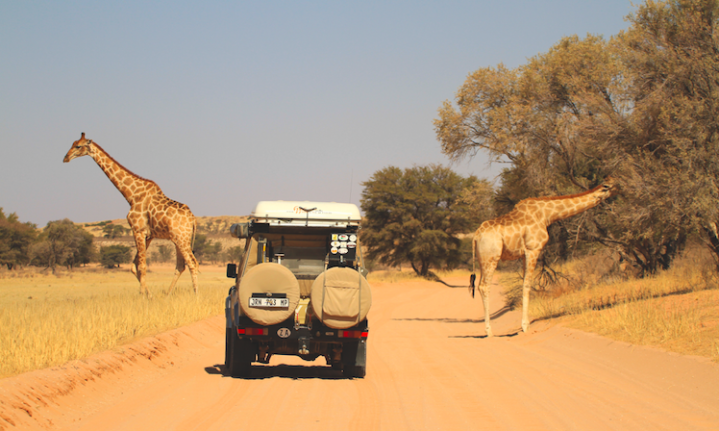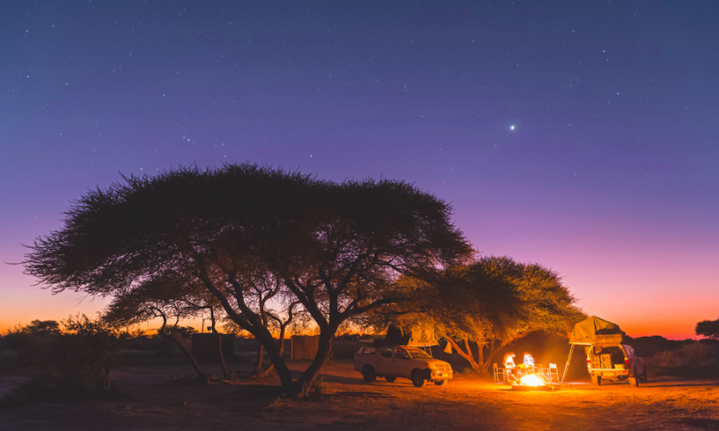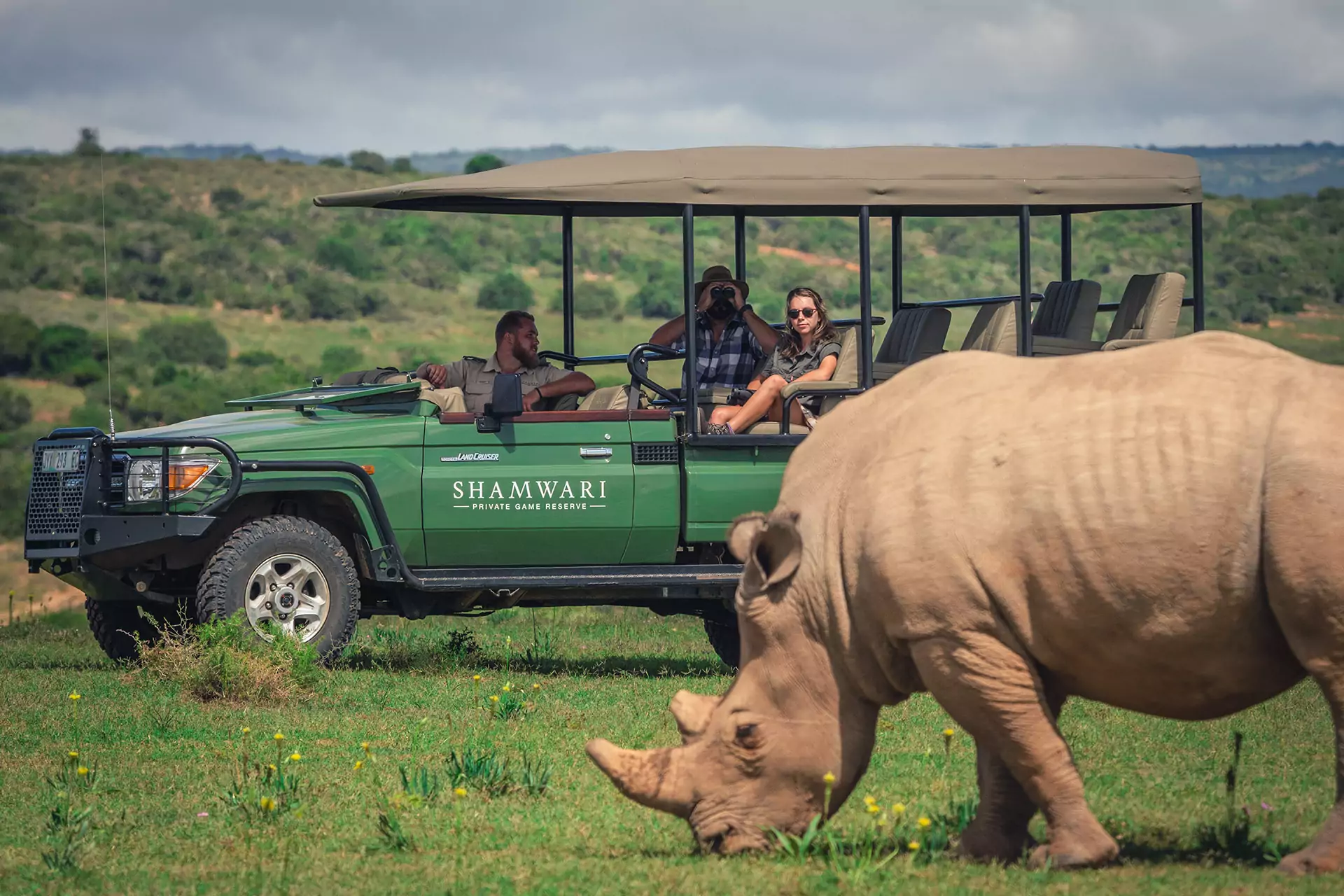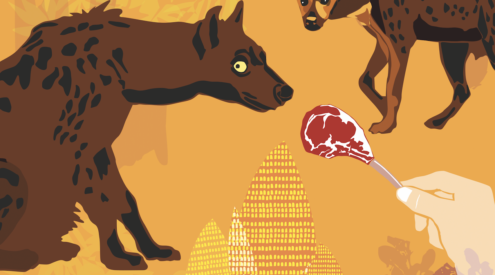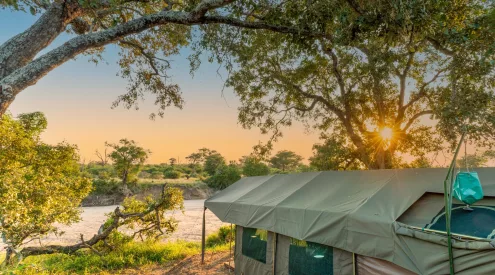Solitude, wide-open space and infinite blue skies… in the Kalahari, these are guaranteed. But will it be the border-straddling Kgalagadi Transfrontier Park? Or is it better to pick the Central Kalahari Game Reserve in the vast expanse of Botswana’s heartland? Kalahari regular Romi Boom weighs the benefits of both.
Kgalagadi Transfrontier Park: more than black-maned lions

The day a lion walked right past me while I was lying prostrate on my back, a haze of April heat hugged Rooiputs campsite. Mid-afternoon is siesta time in the vast semi-arid sandy savannah known as the Kalahari. My fellow campers were napping in our rooftents, despite the furnace. I’d come prepared with a straw mat, hoping to catch a breeze. Flat on the ground, I read with my head propped up against the rear tyre.
The Kgalagadi Transfrontier Park, a speckle in the 900 000km² Kalahari landscape, is shared between South Africa and Botswana, and the fences between the two countries have been dropped for the benefit of animals – and visitors, too.
We were camping on the Botswana side, where, unlike the SANParks section, it’s not an offence to walk around unfenced campsites – despite the frequent presence of predators – although caution is key. Rooiputs is, after all, famous for its resident lions.
My brother-in-law was the first to stir; he’d made a bed for himself in the back of his Prado. ‘Don’t make any sudden moves,’ he said, sitting up. ‘There’s a lion on your right.’
Cool cucumber, I turned my head to look, because surely lions don’t walk around in the heat, and practical jokes are common fare in this family. Indeed, a dapper black-maned lion had chosen to skirt us closely, en route to the shade offered by the customary
A-frame structure at the next campsite, 80 metres away. Our Kgalagadi trip had begun with a bang.
Like everyone who already misses the red sand in their shoes even before they drive out the Kgalagadi park gate, I’ve built up a repertoire of campfire stories over two decades of regular visits to various parts of the Kalahari, which also extends into Namibia. Once addicted, the dunes, the dry riverbeds, the camelthorns, the sociable weavers’ nests, the emblematic gemsbok and kori bustards and meerkat and, yes, the magnificent lions, keep a tight hold on your heartstrings, whether you’re young or old. The Kgalagadi Transfrontier Park is a good introduction to the Kalahari’s desert sandscapes, as much for families as for pensioners, because the accommodation options cater for absolutely everybody.
But is it for you? Game density is often low and visitors have to work hard for their entertainment. While the regular sightings become familiar like friends, it’s the surprises that etch each Kgalagadi trip in your memory. Like all habitual visitors we have countless such experiences and sightings, but still our expectations remain modest.
One year we delighted in tiny meerkat pups on a pan in the Nossob riverbed and diligently marked the spot on our GPS; on our next visit there was no sign even of a pan, it had become completely overgrown with grass. On another trip we discovered a hyena den in the inhospitable calcrete cliffs alongside the Auob riverbed; the clan with playful cubs remained our exclusive delight for days on end.
Sightings in the park are often your own. Despite the fact that the camps are always fully booked these days, no matter what time of year you go, you still find your own space on game drives. Sometimes there may be a small throng of vehicles, but mostly the only clues are left by tyre tracks in the sand.
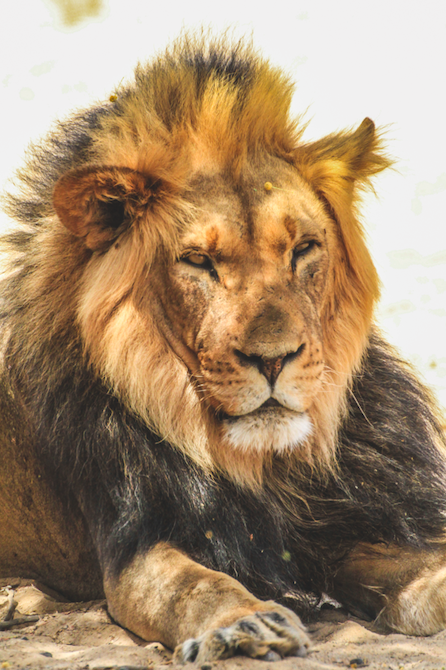
There’s a special camaraderie among visitors who have spotted something others may have missed. In the spirit of sharing, a Cape cobra in a camelthorn tree was pointed out by someone in a Fortuner; an overlander truck pulled over so that we could see a Cape fox by its den. A guide from !Xaus Lodge was humoured by the high-paying guests in his game viewer while he patiently showed us the exact spot where four lionesses with two cubs were camouflaged by shadows in the Auob riverbed.
While dusk in the Kalahari does not linger long, there is a golden moment nonetheless, when most folks take an afternoon game drive. During a particularly dazzling twilight, on the main road to Mata-Mata, two backlit cheetahs were striking a million-dollar pose. Obviously we clean forgot about gate closing times and received a serious ticking off from the attendant when we eventually arrived at Urikaruus Wilderness Camp.
Sunset in the Kalahari is unlike anywhere else. In the three main rest camps there is quite a buzz among the campers but you don’t have to rough it if that’s not your style; there are well-equipped chalets.
It’s a lot quieter at the wilderness camps, each of which has only four self-catering units, such as popular Bitterpan. Reached via a restricted 4×4 route, the remote setting is perfect for capturing glittering star trails and you’ll likely see a preparatory lineup of tripods about the time when smoke announces the lighting of braai fires (lamb chops served with a side order of stillness). In the far north of the park, at Kaa Gate, it’s so deserted that you’re unlikely to see anybody. Twilight might bring a brown hyena, come to drink from a leaking pipe at the campsite. Our presence was tolerated for a good 20 minutes, during which time yours truly was so mesmerised that she didn’t take a single photo.
In the Kgalagadi, far more than in Kruger for example, you have to look and see with your sixth sense. Fallen branches and tree canopies beg to be scanned. With luck you might spot an African wild cat lounging on a branch not three metres from your vehicle’s window. Two months after a previous trip, we found a Verreaux’s eagle-owl in exactly the same tree, on exactly the same branch, less than a kilometre from the Twee Rivieren gate. Some of the best sightings occur around here, even though Twee Rivieren is the biggest and busiest of the camps. Near Samevloeiing, the confluence of the Nossob and Auob rivers, our late-afternoon drive once concluded with a rare treat: a burrowing honey badger, closely scrutinised by a pale chanting goshawk on the ground nearby.
The Kgalagadi’s harsh terrain demands appreciation. The vegetated dunes are relatively gentle in the park’s southwest, where most visitors start their trip. Red dunes, though handsome and photogenic, offer poor grazing, being denuded. In the vast remainder of the park, semi-arid savannah provides sustenance through a variety of desert-adapted plants.
Never meek, seldom mild, weather conditions here give new meaning to the concept of extreme. Winter nights can be so glacial that water freezes in the pipes. In summer it’s scorching, when the parched landscape thirsts for moisture. Thunderstorms build up slowly, then rage with fury. When dust devil whirlwinds suddenly appear out of nowhere, you need nerves of steel to photograph the ominous approach of these desert tornadoes.
Unlike the bushveld, the empty landscape appears desolate and barren. Yet there’s life everywhere, and the beauty lies in its discovery.
Central Kalahari Game Reserve: where bigger is better

Far away – completely off the beaten track – and truly immense, the dry, desolate pans of Botswana’s Central Kalahari Game Reserve are a world unto their own. Much has been written about the legendary Deception Valley, Piper Pan, Sunday Pan, Leopard Pan and Passarge Valley, hence most visitors restrict themselves to the northern circuit. Nothing prepares you for the visceral pulse of nature – massive herds of plains game, mostly springbok and gemsbok, sightings wonderfully described by the African adventurers of yesteryear.
Late morning, our first in the reserve, we were simply hanging out at Kori campsite in Deception Valley. While we were being entertained by ground squirrel and hornbill antics, the familiar sound of a Land Cruiser 70-series approached. On the front door it said Matsebe Safaris. Guide Alwyn Myburgh, a mobile safari operator, stopped his game viewer to tip us off that there was a mother cheetah nearby, hunting with her two adolescent cubs. Plus another cheetah male, not far off, who’d made an ostrich kill. All within a kilometre of our camp, and there we were, watching squirrels.
Too encumbered by our open rooftents, we begged Alwyn to take us to the sightings. As his clients were due later that afternoon only, he gallantly obliged. En route we learnt that his family moved into the interior of the Kalahari desert almost a century ago as cattle and sheep farmers. Growing up with San people, the youngster learnt about tracking as well as Kalahari fauna and flora.
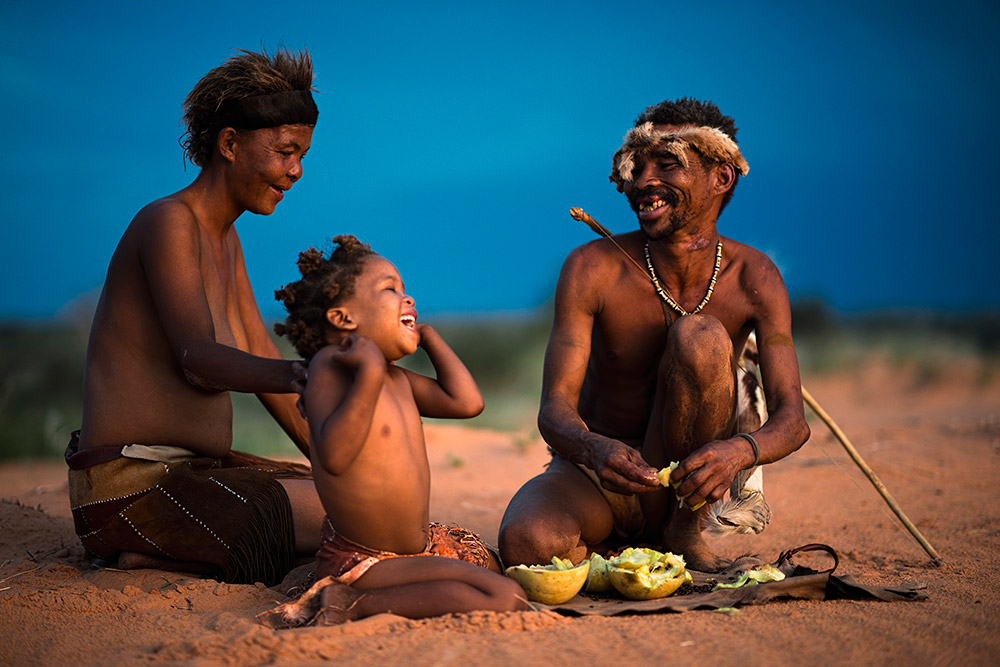
After a crash course in the lie of the land, we felt confident that we’d made the right decision to enter the reserve at Matswere Gate in the east so that we could first explore Deception Valley, setting of the famous Cry of the Kalahari by Mark and Delia Owens. A sensible itinerary entails moving on southwards to Piper Pan, where a wake of vultures suggested that we had just lucked out on lions at a wildebeest kill.
The reserve is a remote getaway for well-equipped adventurers who truly enjoy solitude. Best practice rules: bring enough fuel and take as much water as you can. Bring plenty to read, sudoku, crossword puzzles and playing cards. Enjoy downtime at the campsites, relishing the peace and quiet. ‘Don’t race around, driving huge distances,’ advise old safari hands Harriet Nimmo and Mike Kendrick, who have visited the park regularly for the past 30 years.
‘Instead explore in the vicinity of your pitch, getting to know the nature around you.’
To our horror there was no campsite at Phokoje,
although we had booked it through Bigfoot Tours. Moving on to San Pan, we arrived just before sunset to find it thorn-infested; again it was evident that it had been a very long time since anybody official came to check on the facilities, sparse as they are. Next morning, though, the beauty of San Pan and the opportunities for ultra-wide angle photography left us speechless. All was forgiven.
With rolling grasslands and flat white salt pans, the reserve is not a desert at all , but the terrain is nevertheless serious 4×4 country. Long grass makes for slow progress with radiators being checked every 10 minutes, despite seed nets affixed to the grilles. The sandy tracks and the Passarge cutline, on the other hand, proved quite passable in mid-April, at the end of the rainy season.
We were charmed by the wilderness sprawling in every direction, less so by the dense growths of shrub savanna. A definite drawback is that the bushes encroach on to the track and leave racing stripes on the side of your vehicle. Almost, but not quite as bad as in Khutse Game Reserve, the park that spills over into the south of Central Kalahari, where we’d cried long tears on a previous trip.
In Central Kalahari you’ll be camping on your own. ‘You’re in your own space, with no fence and no neighbours,’ enthused Harriet and Mike. ’It is just you, in your own little patch of wilderness. Don’t go there expecting to have amazing sightings – go to appreciate and experience being on your own in the wild. You truly feel at one with nature.’
Crossing from South Africa to Botswana
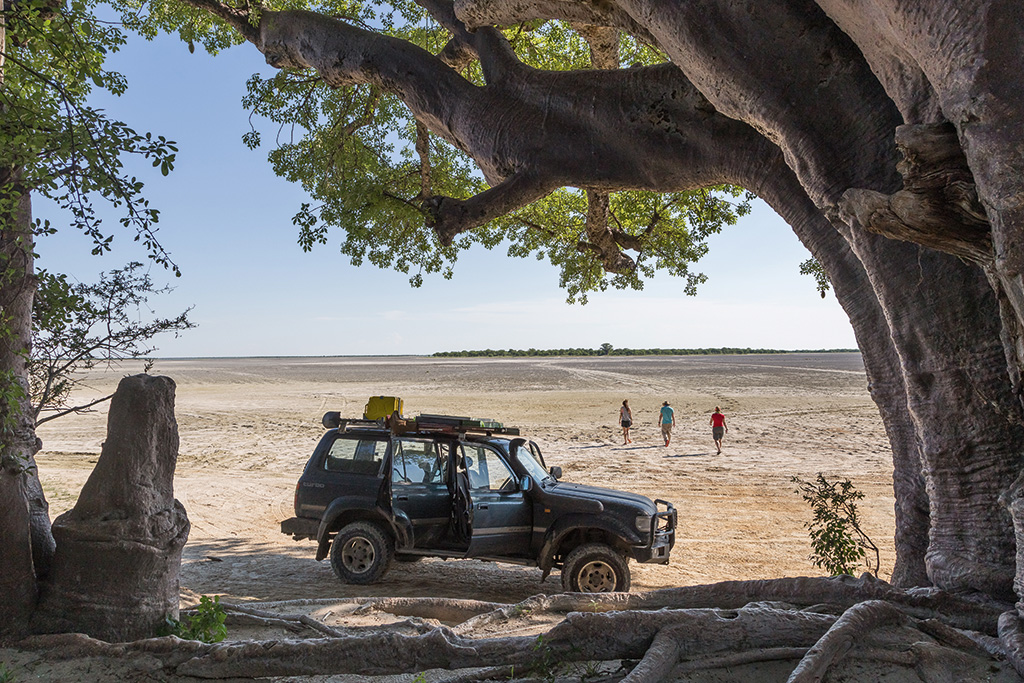
The distances in the Kgalagadi Transfrontier Park are huge and those in the know spend quality time at each of the three main camps, Twee Rivieren, Nossob and Mata-Mata, all situated on the South African side of the park. This is not a place to rush from camp to camp. Throughout the day small critters like ground squirrels, meerkat and mongoose keep you entertained in camp and the birding is always outstanding.
READ: Border posts reopen in Kgalagadi Transfrontier Park
Immigration protocol requires that guests stay two nights in Kgalagadi when entering at one gate and exiting at another. Botswana’s Department of Wildlife and National Parks requires you to pass through its customs office at Two Rivers, even if you don’t plan to visit Botswana outside the park. This is for statistical and emergency purposes. In Botswana’s Central Kalahari Game Reserve, there are no big public campsites, no shops, no fuel stations, no Wi-Fi nor cellphone reception, but there is soul.
For Botswana parks, accommodation reservations and pre-payments are essential. A campsite can take up to six people with a maximum of three vehicles. Campsites usually have two enclosures, for a longdrop loo and a shower (bring water). Park entry fees must be paid at the gate on arrival in cash, Botswana pula only. There are no credit card facilities.
Stay here
Kgalagadi Transfrontier Park
On the South African side of the park, accommodation options range from fenced camps with chalets and campsites to unfenced wilderness camps and a luxury lodge for those who enjoy creature comforts. Some of the newer chalets have riverside views; there are swimming pools, shops and viewing hides – even a restaurant at Twee Rivieren.
Rates from R305 for two people camping to R2 370 per honeymoon riverside cabin. Conservation fee R101 per adult per day, R50 per child per day. Internationals and SADC residents pay more. Free entry for members of SANParks’ loyalty programme provided that proof of identity and Wild cards are shown on arrival.
SANParks Central Reservations
+27 (0)12 428 9111 or mobile: +27 (0)82 233 9111, or email [email protected]
!Xaus Lodge is owned by the local Komani San and Mier communities and run by Transfrontier Parks Destinations. Full board rates on application.
Phone +27 (0)12 428 9111 or +27 (0)82 233 9111, or email [email protected] or visit xauslodge.co.za
On the Botswana side of the park, the facilities are more limited; either you camp with no running water or electricity, or you pay pretty pula to stay in upmarket lodges. For campsites such as Rooiputs, Polentswa, Kaa and Mabuasehube, contact the Department of Wildlife and National Parks (DWNP). Phone +267 318 0774, or visit [email protected].
Rates for SADC countries: park entry fee P20 pp, vehicle entry fee P4, camping P30 pp. Park fees and vehicle fees are calculated per calendar day spent in the park, not per 24-hour period.
Tashebube, Rooiputs and Polentswa (recently burnt down) lodges have full board rates on application. Phone +267 316 1696, or email [email protected], or visit tashebube.co.bw.
Central Kalahari Game Reserve and Khutse Game Reserve
Apart from a select few upmarket lodges, there are 41 campsites such as Kori, Leopard Pan, Piper Pan, Sunday Pan, Khutse Moreswe and Khutse Molose, operated by Bigfoot Safaris.
Phone +267 395 3360 or email eservations@bigfoottours.co.bw, or visit bigfoottours.co.bw.
Deception Camp can be booked through the Department of Wildlife and National Parks (DWNP). Phone +267 318 0774 or email [email protected]. Rates for SADC residents: park entry fee P190 pp, vehicle entry fee P75, camping P40 pp pn.
Park fees and vehicle fees are calculated per calendar day spent in the park, not per 24-hour period.
ALSO READ: SanParks showdown: Kgalagadi vs Kruger











